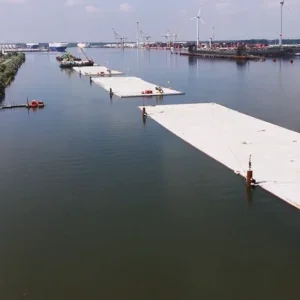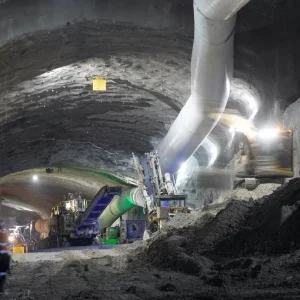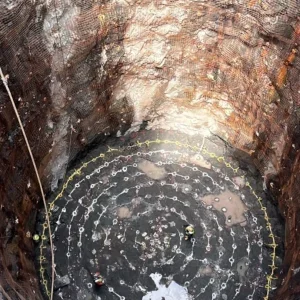Breakthrough was achieved in Portugal this summer when a 3m diameter Terratec-refurbished Robbins TBM completed the 8km long Odelouca-Funcho water transfer tunnel in the country’s Algarve region.
Spie Batignolles, supported by Ramalho Rosa Cobetar and Etermar, constructed the tunnel through sedimentary rock on time, despite some unexpected geological conditions. “Location-wise, this is the job of a lifetime,” Frantz Fournier, site manager, said. “In view of the fact that the tunnel was finished on time, we were rather pleased with our choice of equipment and suppliers.”
The transfer tunnel is being built as part of a new dam. Since 1985, the Funcho dam has provided most of the potable water requirements for this tourist region. As the popularity of the Algarve has increased over the years, so has its demand for water. To satisfy this demand, a new earth dam is being constructed at Odelouca.
The TBM was launched from an 80m deep inclined launch tunnel, constructed using a hydraulic hammer with steel horseshoe arches and shotcrete for support.
The TBM installation time was just five weeks, and production commenced immediately afterwards. The general run of ground was folded, with schist. A fault area about 258m long was encountered during the drive, where steel sets had to be erected, together with Atlas Copco Swellex bolts and shotcrete as required. Some 16,000 1.8m long rockbolts were used throughout the tunnel as primary support.
The TBM produced an average daily advance of 27.5m, with a best day of 96.8m. Best month’s advance was 1,062m. Cutter consumption was low, with each cutter completing nearly 1km before refurbishment.
The TBM was equipped with handheld drills for rockbolt installation, and a dust extractor to cope with the dry shotcrete. Probe drilling was also undertaken.
The tunnel is being lined with cast-in-place monolithic concrete to a 2.4m diameter using three 24m long CIFA formworks.
Little exploration drilling was done along the route of the Odelouca-Funcho tunnel, so very limited core information was available to the contractor. The majority of the project was expected to be excavated in 40MPa-100MPa sandstone.
The cost structure of the project effectively ruled out the purchase of a new TBM. However, the diameter and the geology were a reasonable match with the Mangrove Dam to Boomerang Creek project in Australia, which had been excavated by TBM during 1987-1988. This project comprised 11km of tunnel in 30MPa-80MPa sandstone.
Australian contractor Thiess, the owner of the TBM, had employed excellent storage practices. Little deterioration of major components had occurred, with only the electrics requiring complete renewal.
The TBM was refurbished by Terratec, and supplied together with a backup system designed to integrate with the rail-bound muck removal method. Construction commenced in April 2002, and completed on schedule in July 2003.







